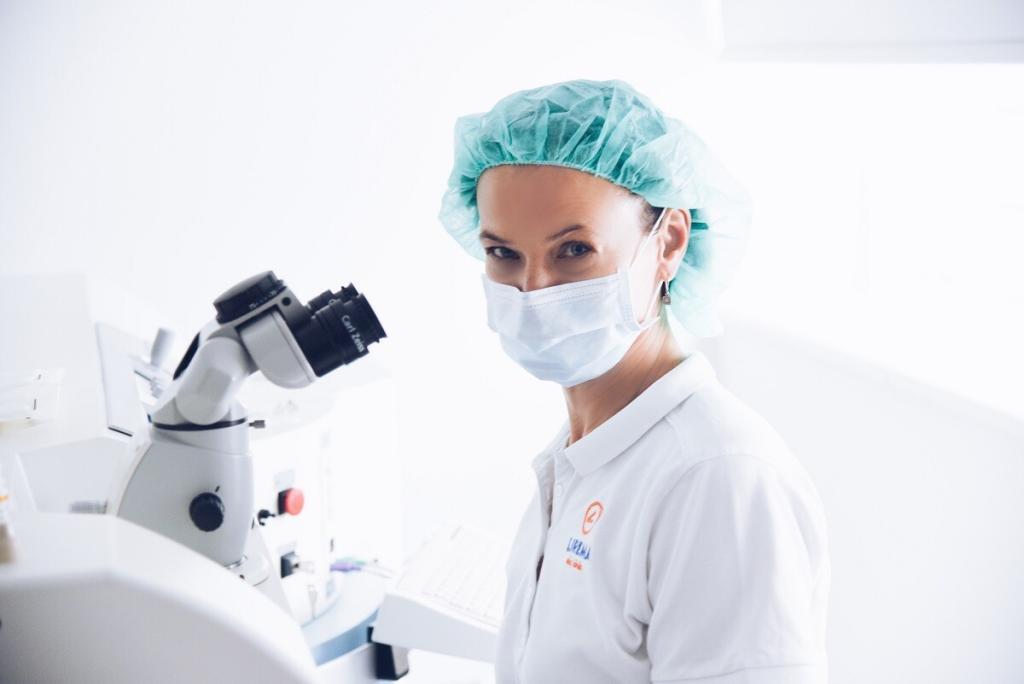Deteriorating visual acuity, reflections in the dark, blurred or double vision, sensitive and dry eyes – when you notice these symptoms, you are in a hurry to buy, change glasses or contact lenses first. Although the symptoms are very similar to myopia, you can be unpleasantly surprised after a visit to the doctor’s office.
Keratoconus is a progressive corneal rounding and thinning that causes a person to become poorly sighted. The exact cause of the disease is still, unfortunately, unclear. It is primarily associated with genetics. Various allergic eye conditions, constant eye rubbing also contribute to the progression of the disease.
Keratoconus is usually diagnosed in young people and is more common in men but does not bypass women. According to statistics, earlier, around the 1980s, it affected one in two thousand people. The disease has now become more common, with one in 400 to 700 people suffering from keratoconus.
Misleading Symptoms
Impaired, blurred vision, brightness, resulting reflections, or dry eyes are common signs of myopia or astigmatism.
“Patients in their twenties and thirties who experience these symptoms find it challenging to drive and often experience difficulties of living a previously active life. They think that their vision deteriorates due to the constant use of a computer. When they hear an atypical diagnosis, they are stunned,” says Lina Socevičienė, an eye doctor and microsurgeon at the Lirema Eye Clinic.
According to the doctor, patients usually complain of more impaired vision in one eye, but the disease can also occur in both eyes. In this case, the damage to the eyes is usually uneven.
“As the keratoconus develops, the cornea of the eye begins to convex and thins. “We are happy to have a ‘black belt’ on the market – not only specialists with extensive experience in the treatment of this disease, but also the most technologically advanced devices that can accurately diagnose and treatments that prevent the development of complex diseases such as keratoconus,” says the microsurgeon.
The Disease is Given Away by Physiology
Although it can be challenging to identify keratoconus without special medical techniques, cues can be noticed during an ordinary eye examination. For example, it is vital to pay attention to how the patient views.
“It is necessary to observe how a person communicates and tries to see – whether looking straight or turning his head, squinting, straining. Turning the head sideways while focusing on an object can in many cases suggest that something is not right,” L. Socevičienė notes
According to the doctor, another critical indicator of the disease is not correcting it with corrective measures. When trying to correct vision, the patient continues to have complaints of vision and overall poor well-being.
“A corrective measure – glasses or lenses – may perfectly match the diopters set by a specialist, but a person will still feel discomfort and will see poorly. This can also cause intense headaches,” says the microsurgery.
The advanced keratoconus leaves the so-called Vogt stretch marks in the cornea, the cornea is scarred, and the cone-shaped convexity is visible to the naked eye. In this case, the person can suspect the disease himself.
Modern Technologies Come to the Rescue
The keratoconus progresses slowly. Once diagnosed, vision retention processes are discussed with the patient and, depending on the condition of the eye, the patient is either monitored or undergoing corneal cross-linking (CXL) surgery.
“It is unfortunate, but it is impossible to cure this disease. It is important to perform a corneal enhancement procedure on time so that the keratoconus has minimal effect on the cornea and vision in general. After the procedure, the good news is that the cornea often stops covering and thinning, and flattens slightly. As a result, vision is improved by 1 to 2 of the eyes chart’s lines,” says the microsurgeon.
According to the doctor, in rare cases, a combined corneal strengthening operation can be used, when at the same time not only the cornea is strengthened, but also a partial correction of the visual impairment is performed, but a prerequisite for such a procedure is a sufficient corneal thickness.
In late-detected or highly advanced keratoconus, a simple corneal enhancement procedure may not help. You may need to prepare for a complex corneal transplant, so it is essential to check your vision in time it deteriorates.
“Corneal transplantation is an extreme measure. The main goal is to detect the keratoconus in time and stop its development. To avoid such surprises, it is recommended to check vision preventively every year,” L. Socevičienė concludes.
